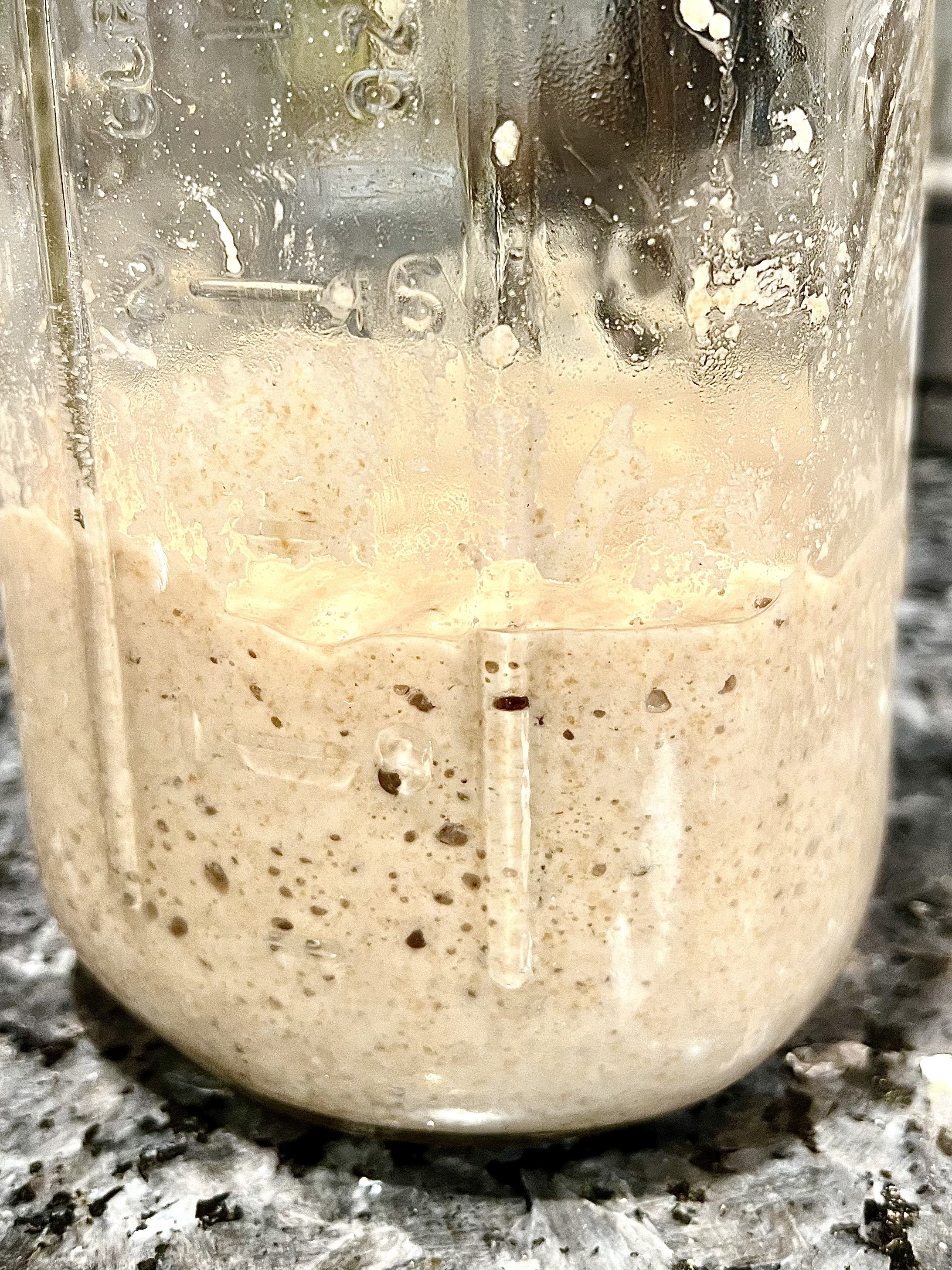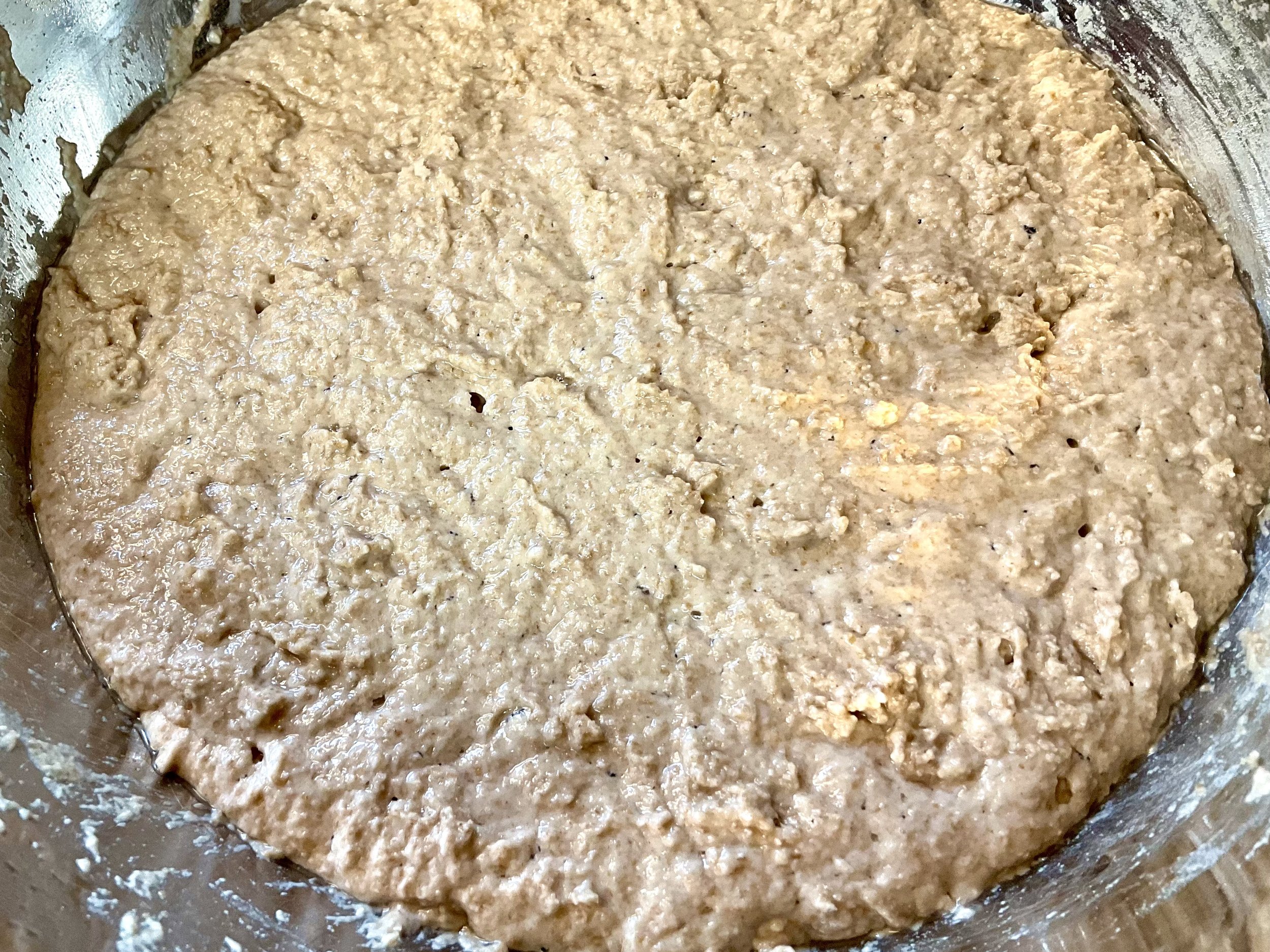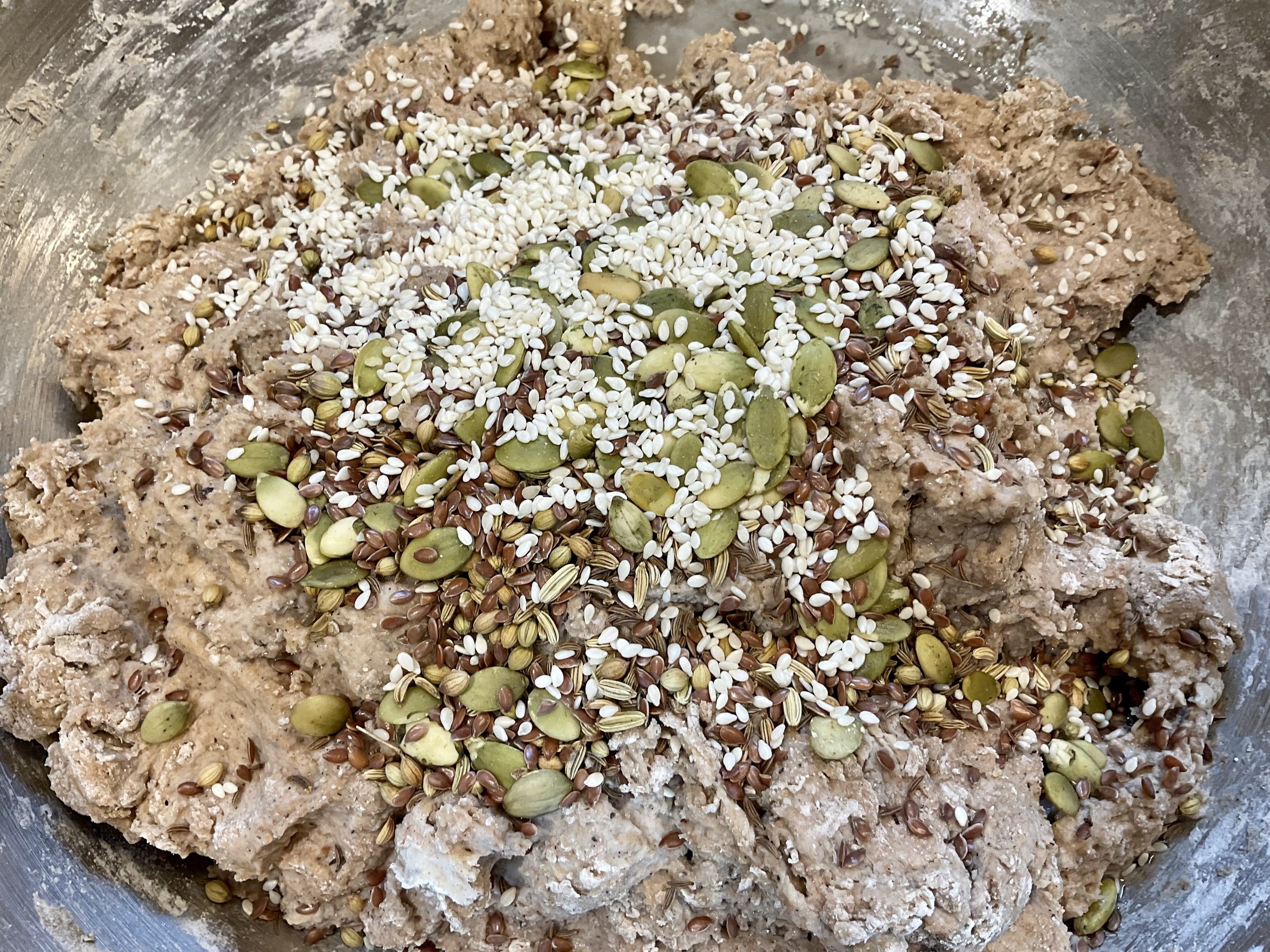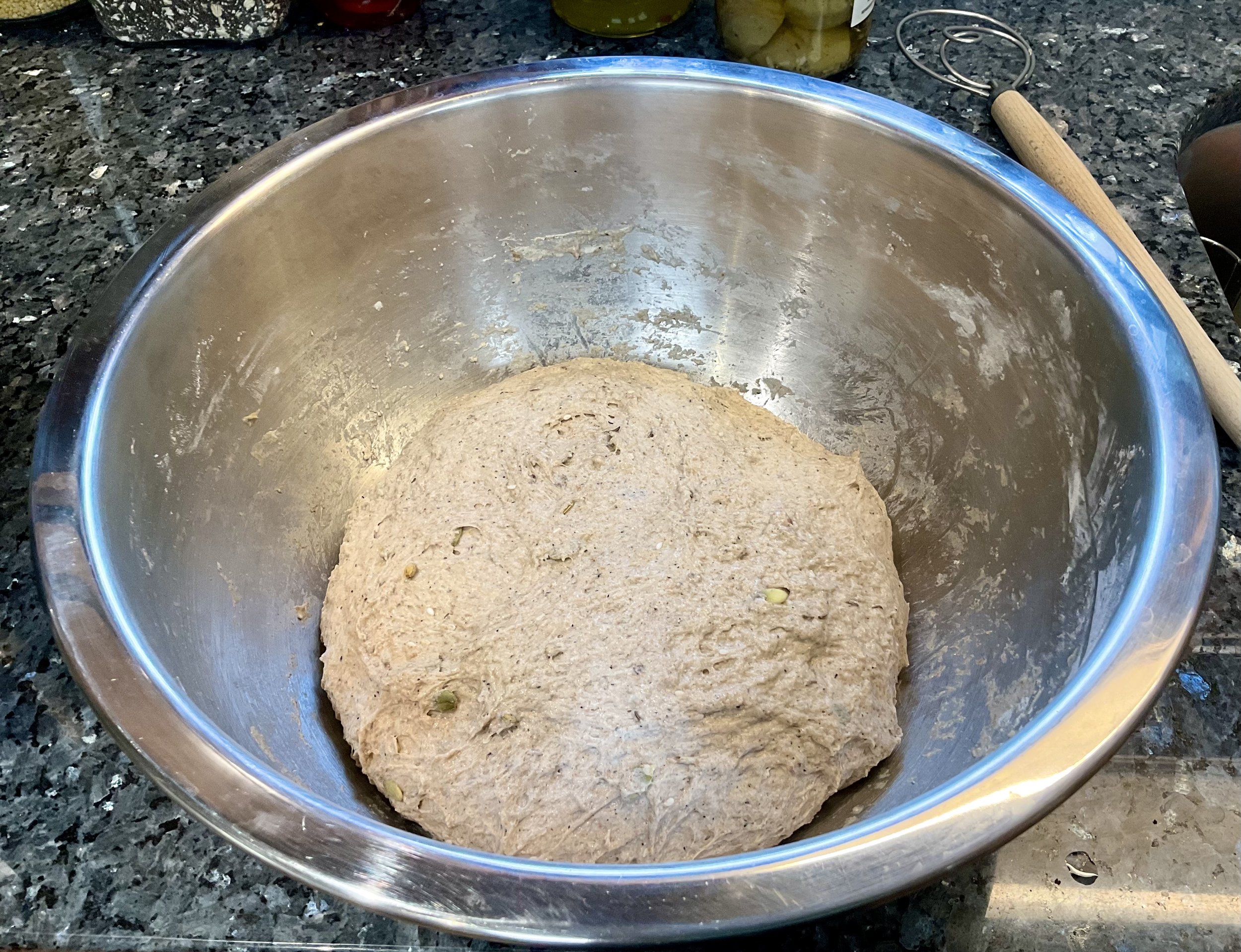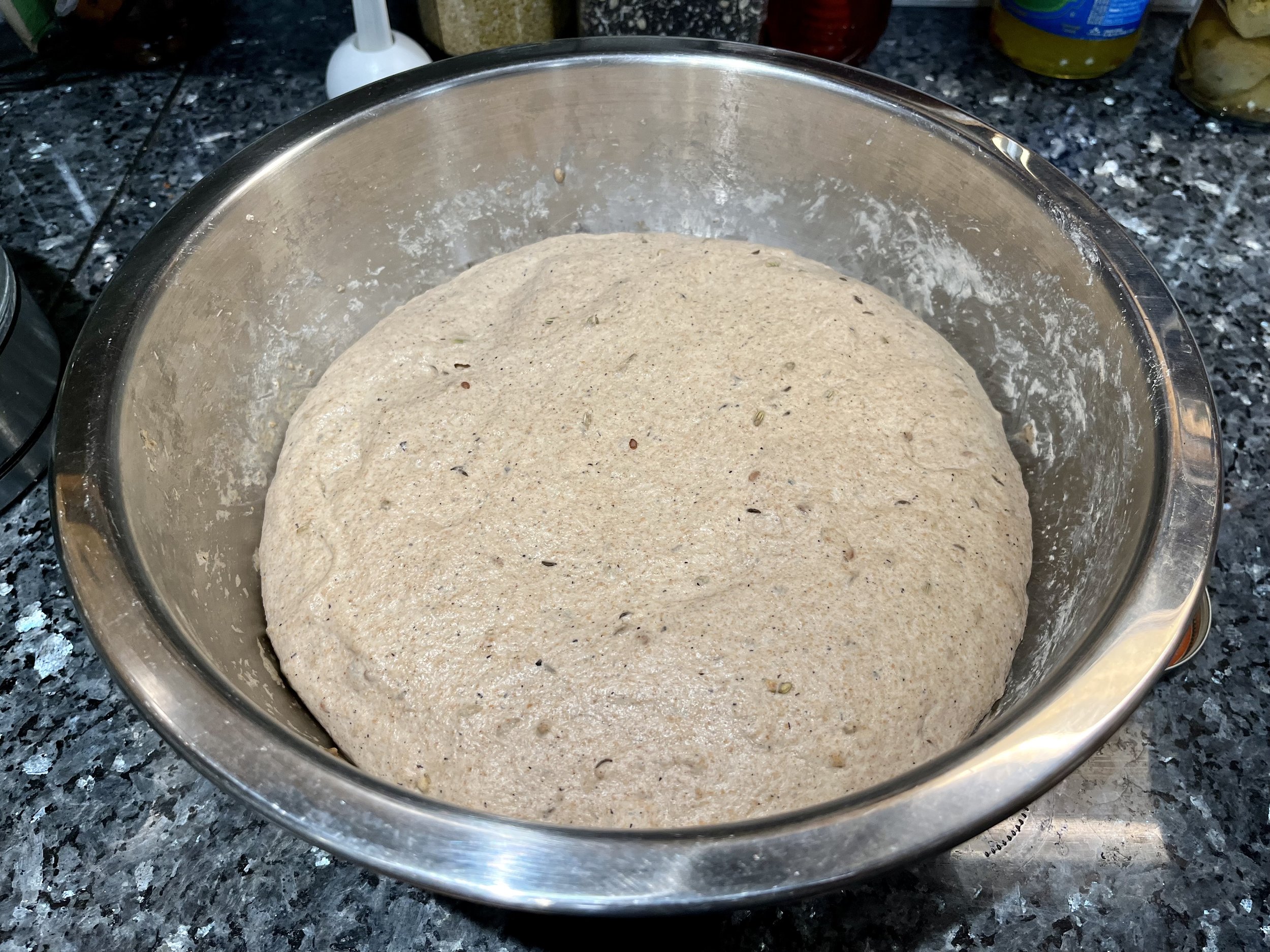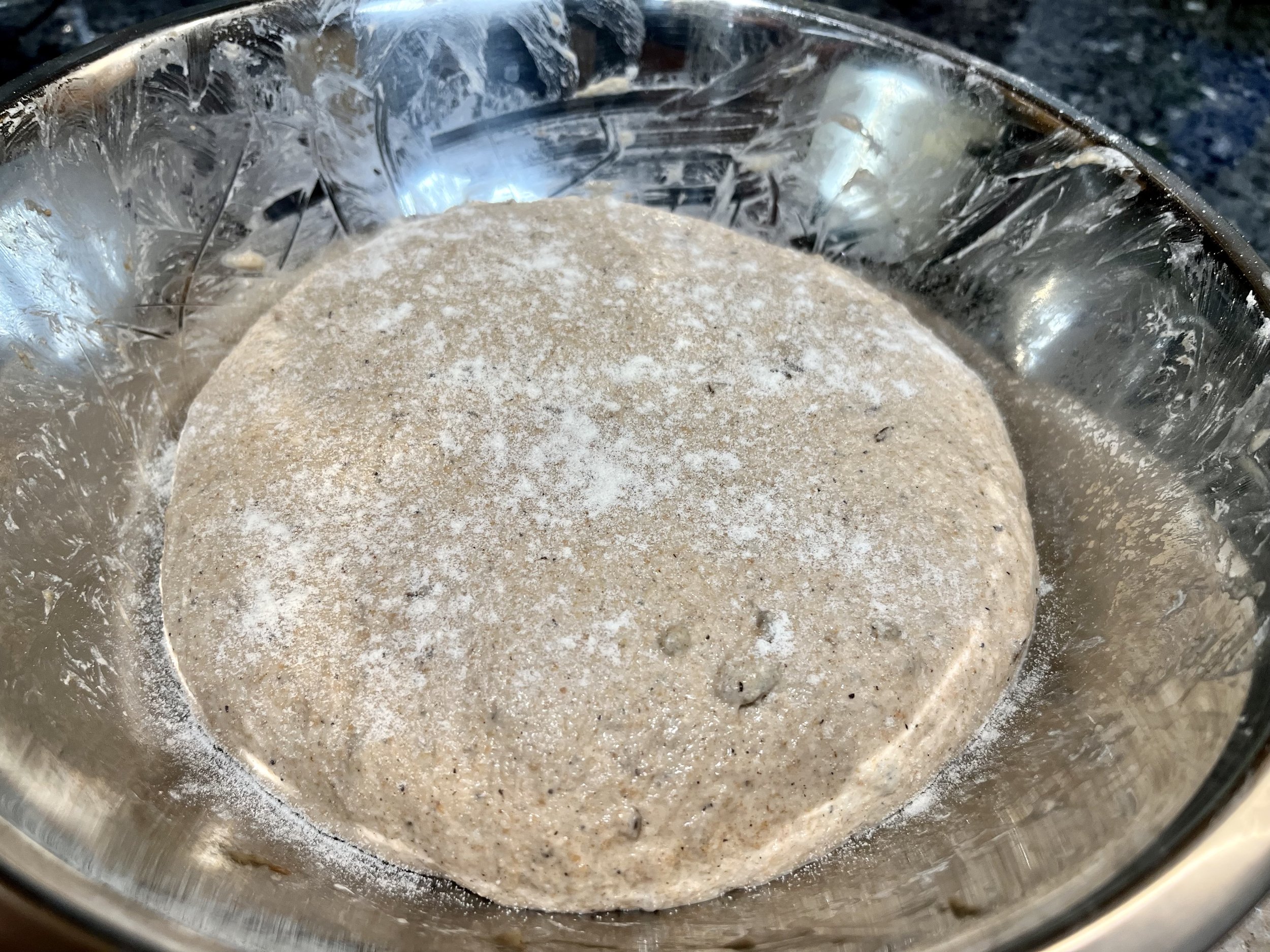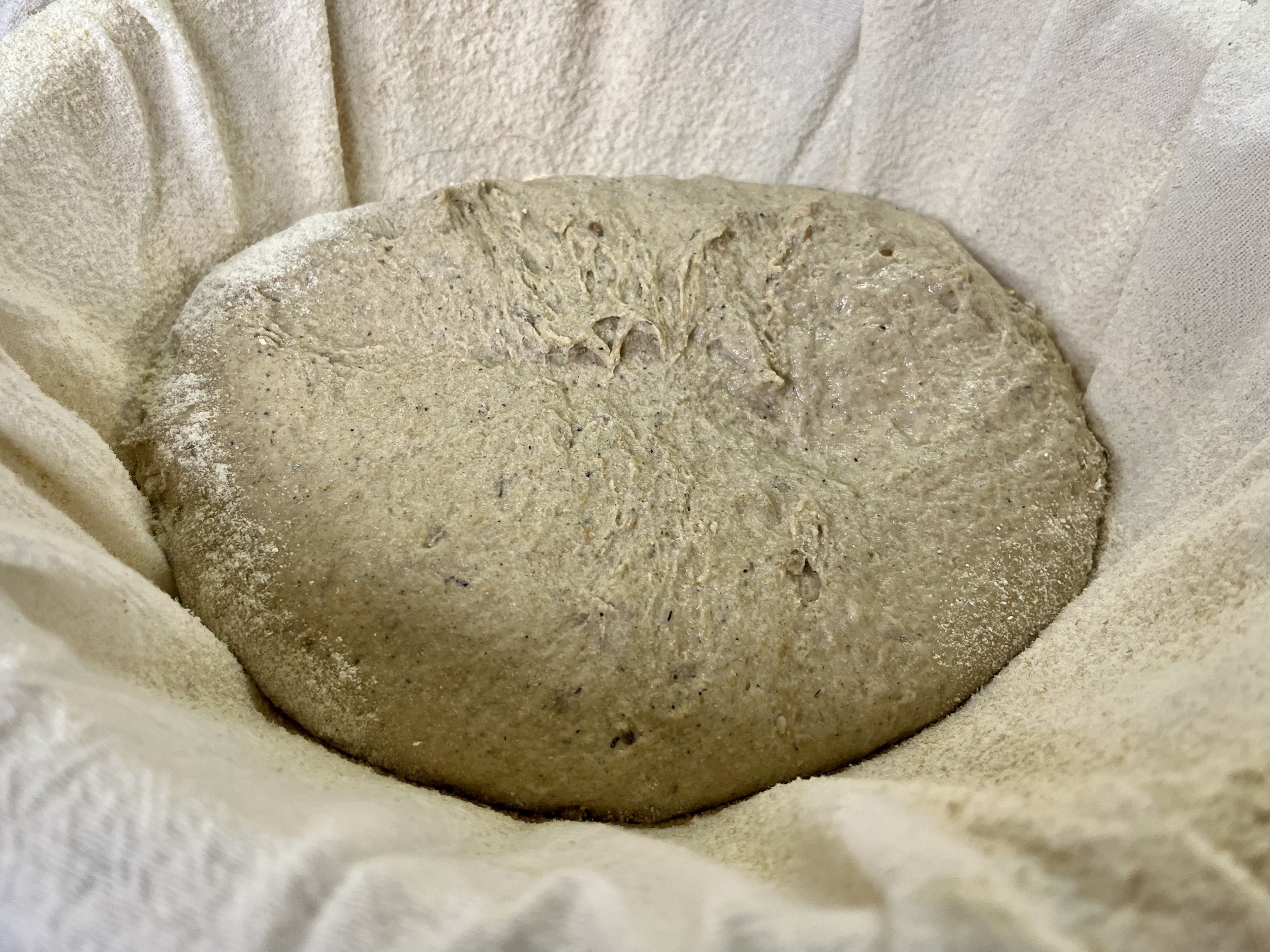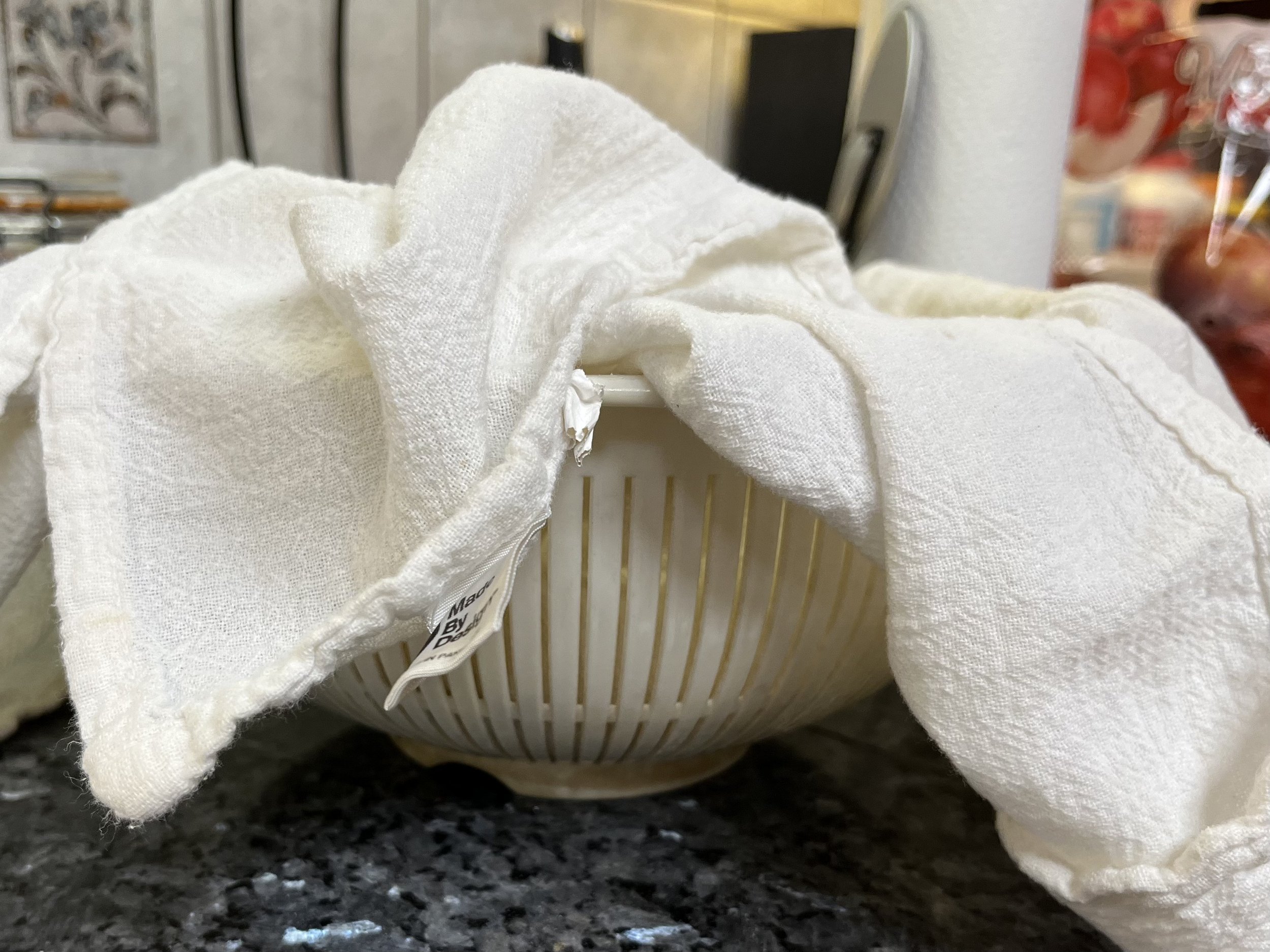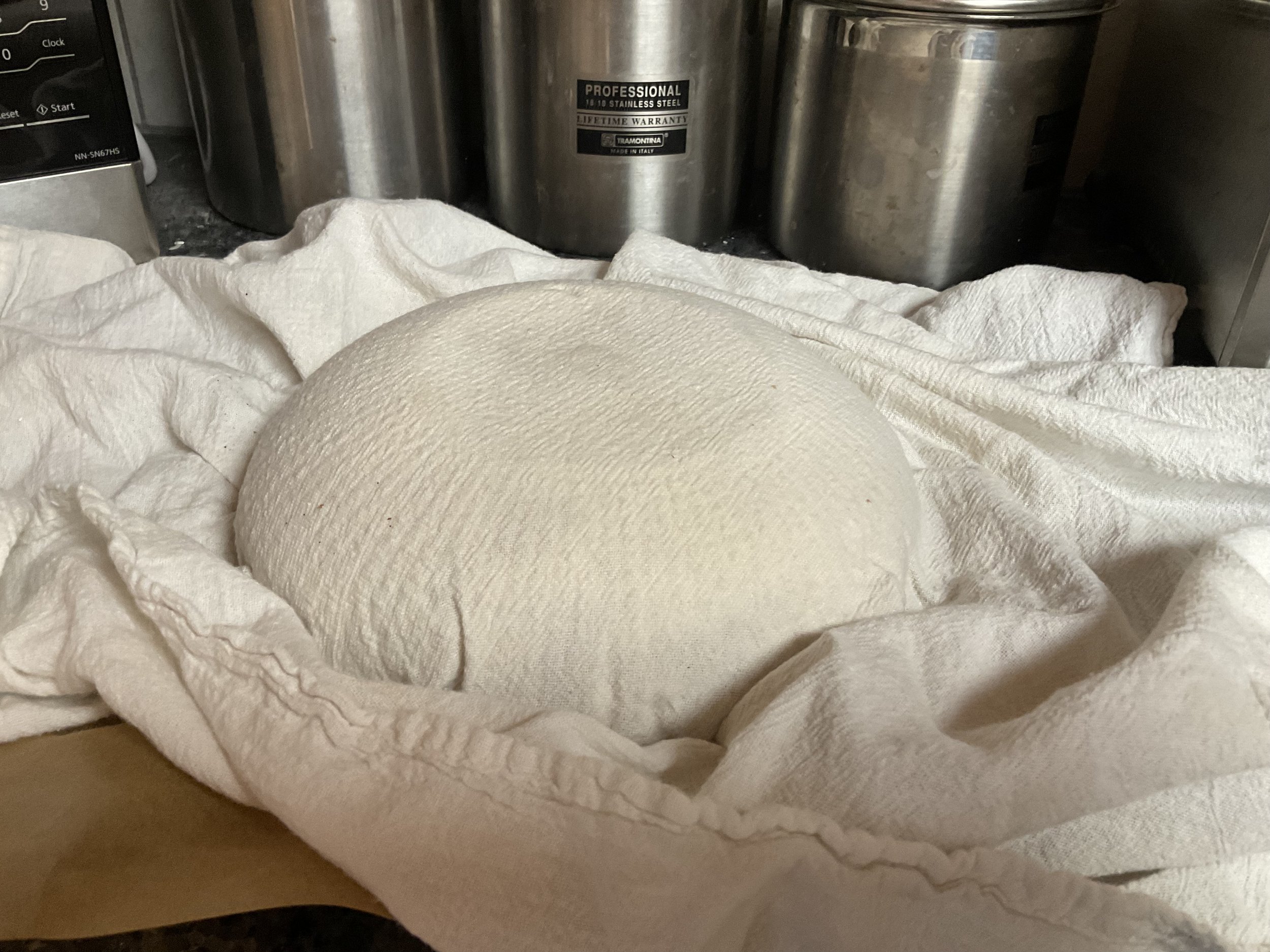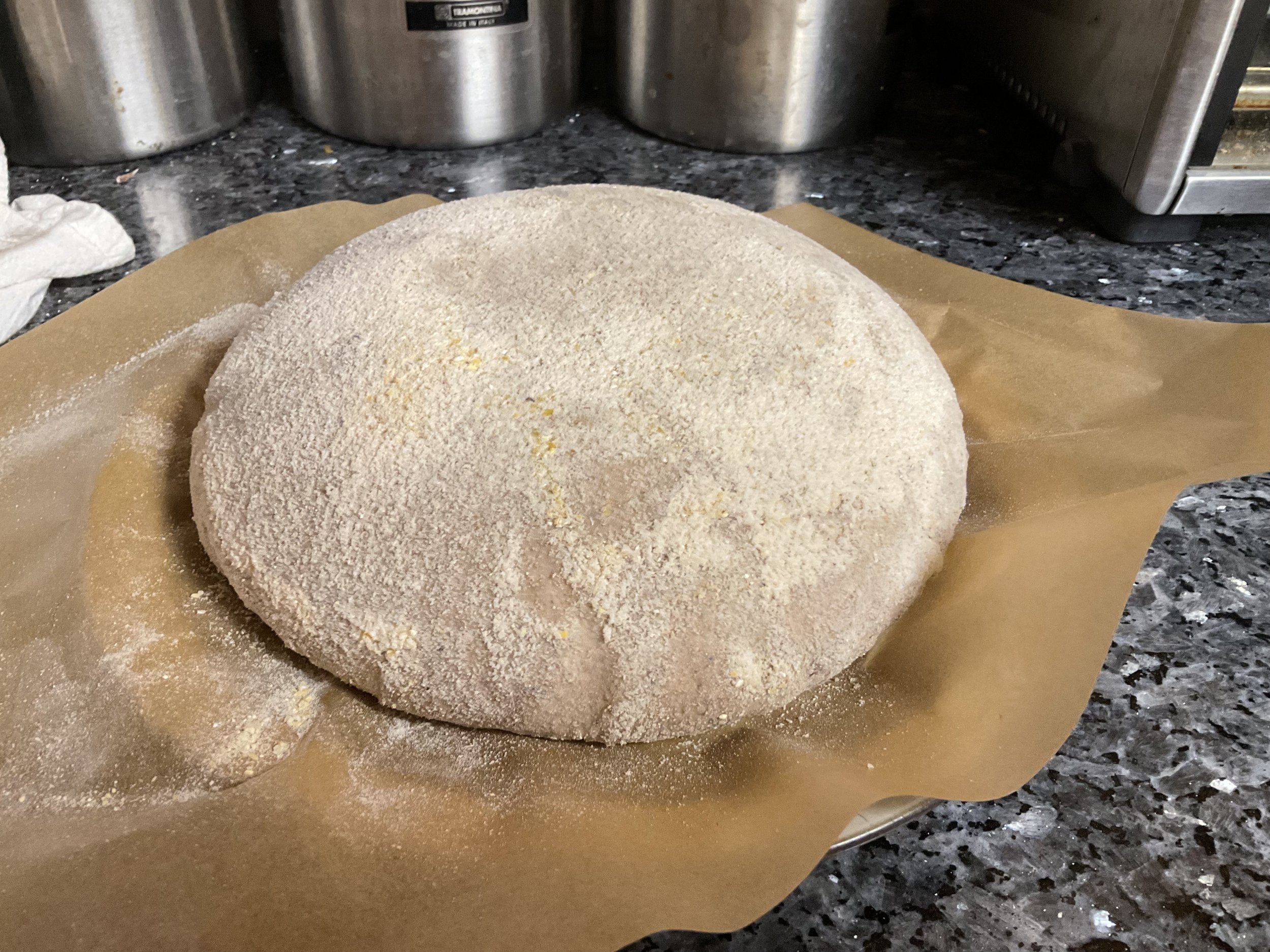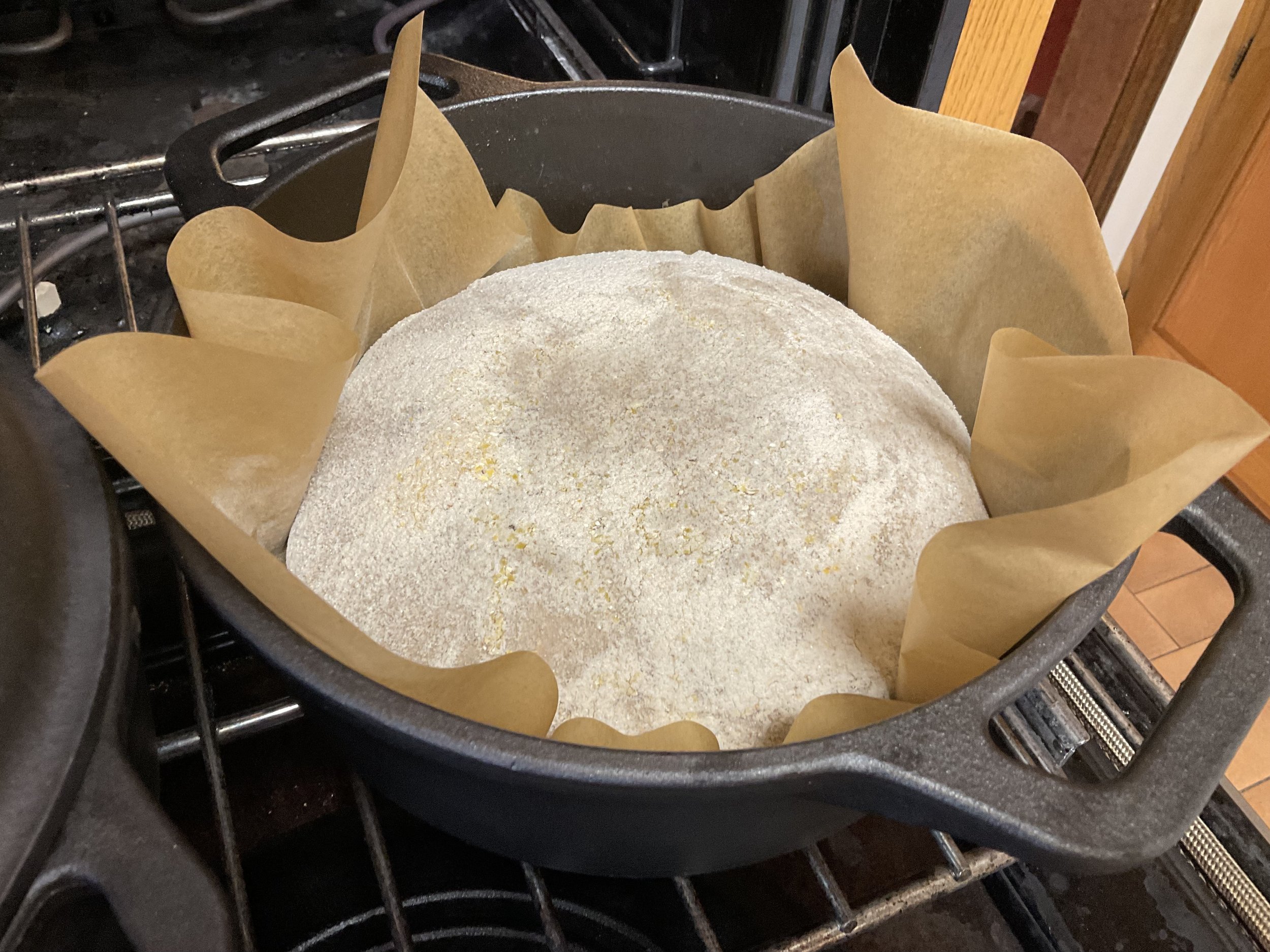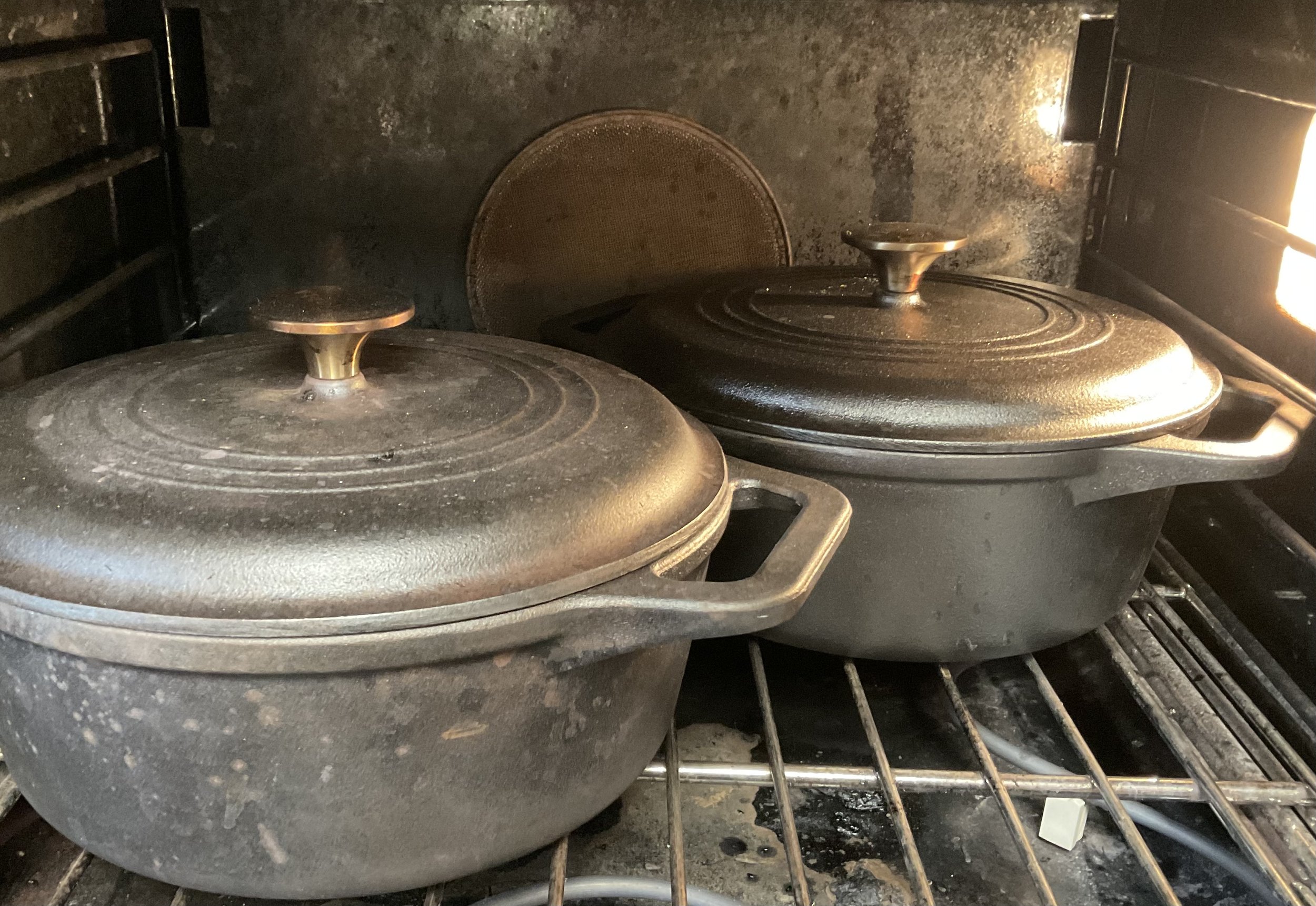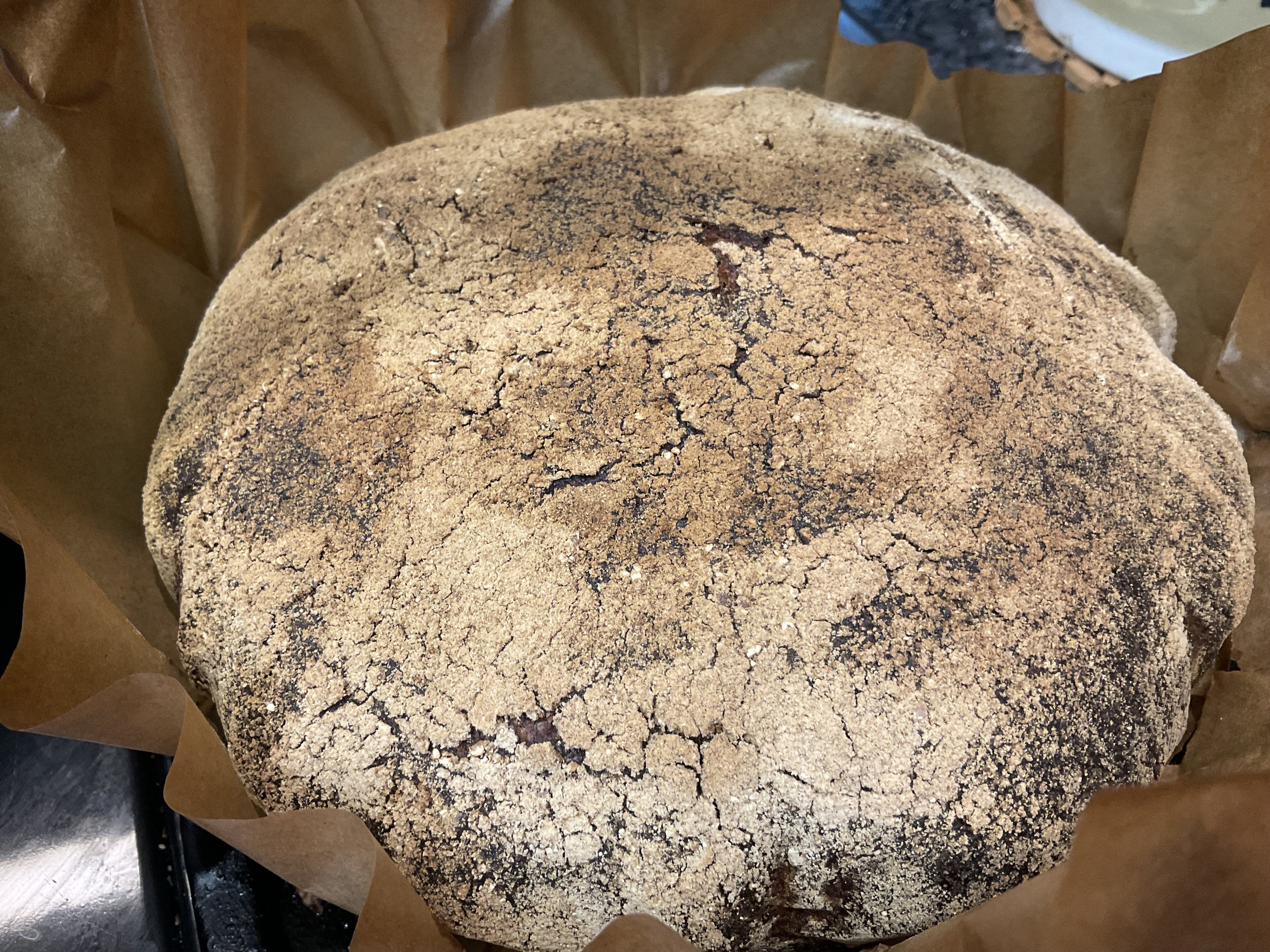75% and 35% Whole Grain Sourdough Bread

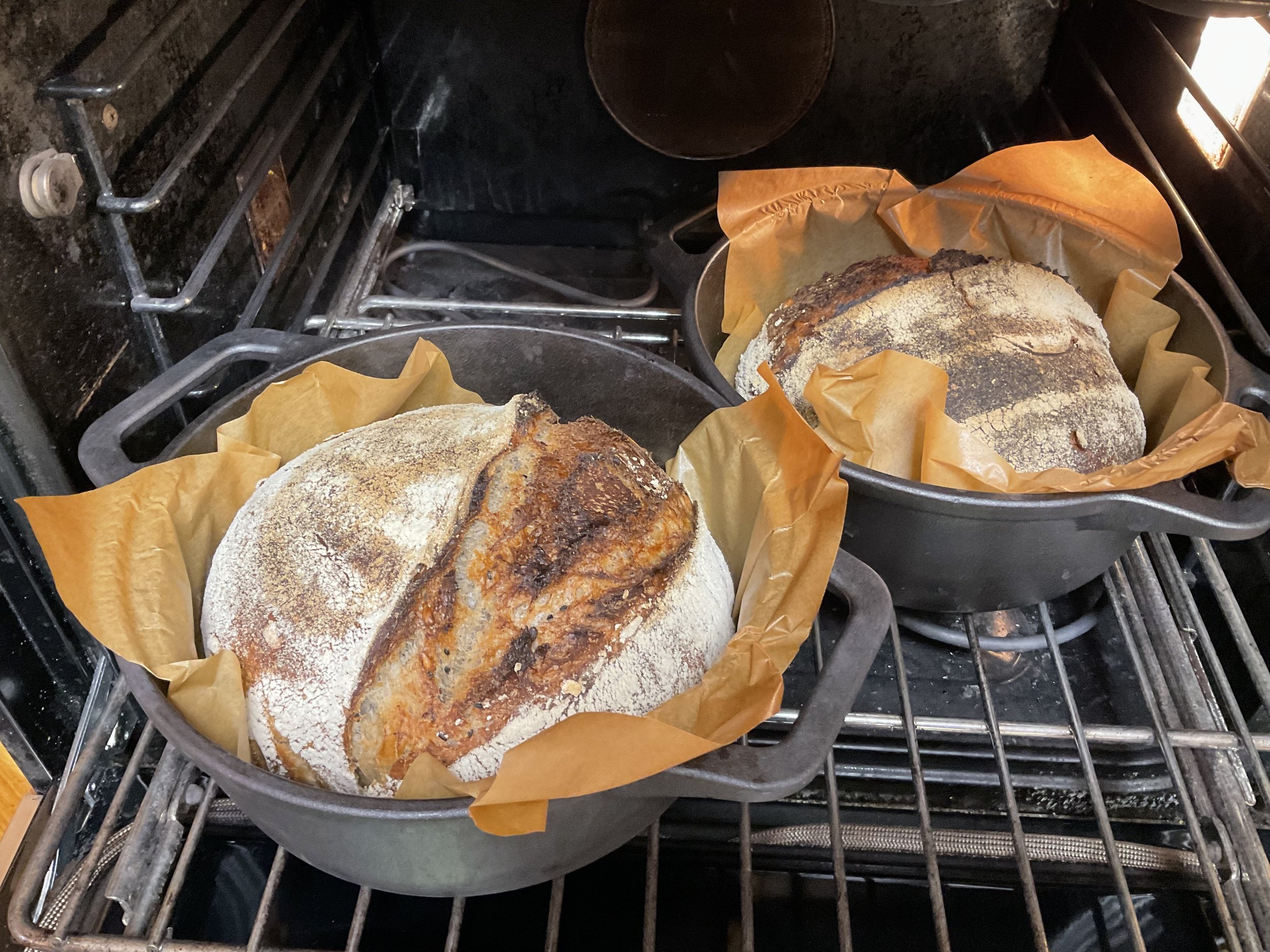
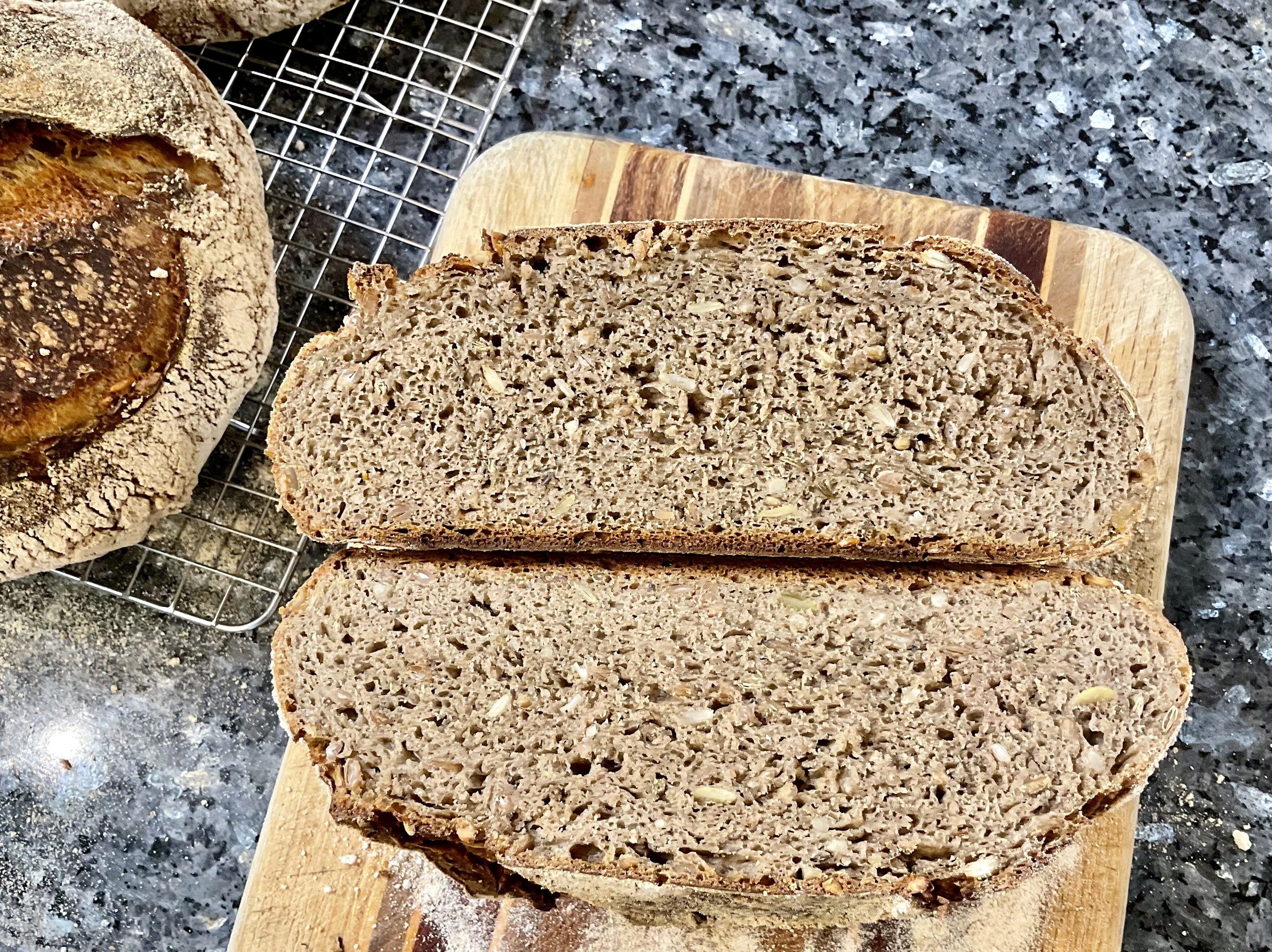
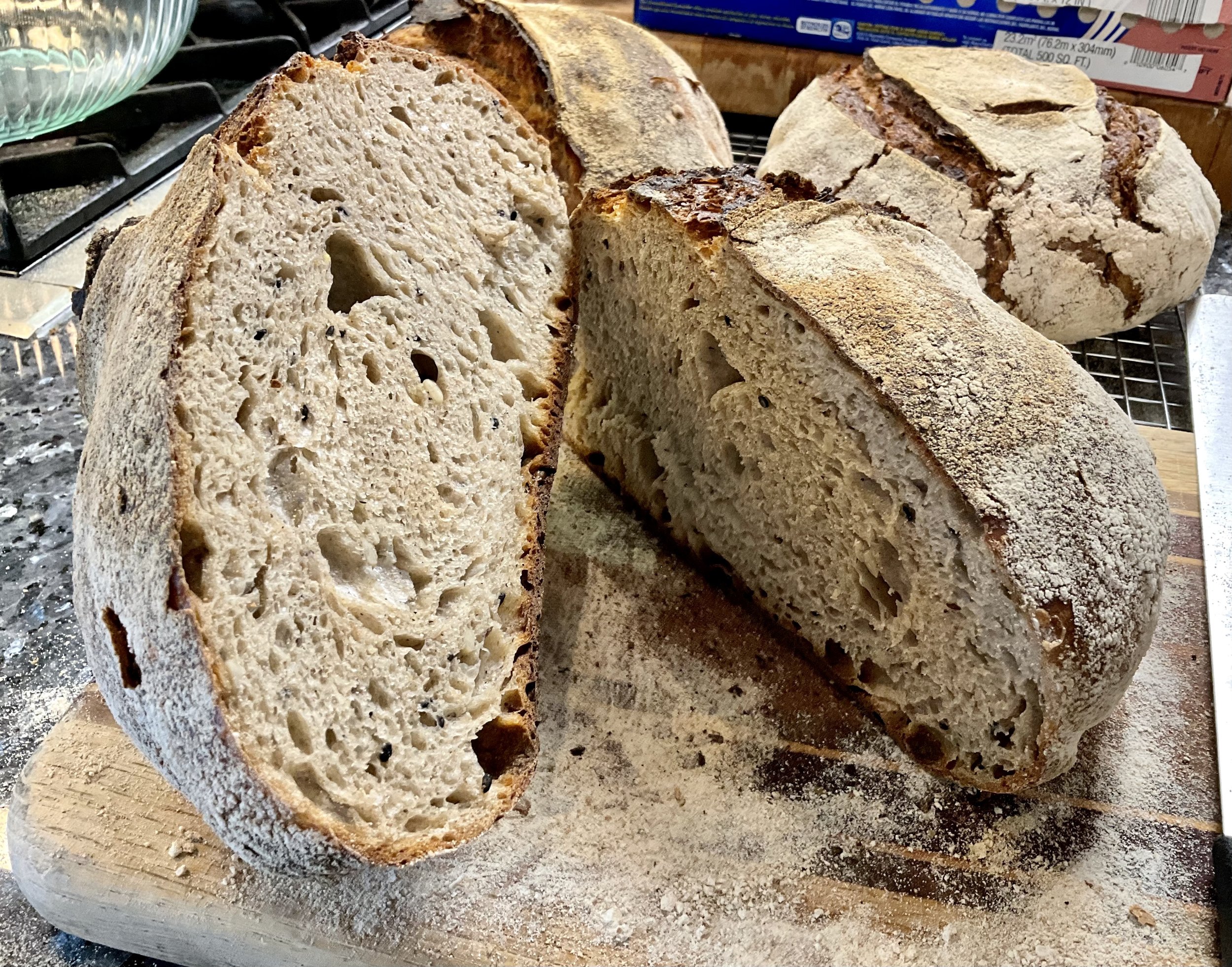





The holy grail of sourdough bread for me is the best combination of crust, texture, and taste. However, merely achieving the holy grail with a standard bakery 90/10 white to whole wheat flours ratio is really just the beginning. Tons of people (myself included) started with this version from the Tartine Sourdough method. In the end, both for taste and health, what I sought to achieve is a whole grain sourdough with a 75/25 whole grain flour to bread flour ratio, packed with whole rye berries, seeds and aromatic spices to impart the old world German flavor. I am proud to say that I have reached the mountain top of more than 10 years of sourdough bread making!
I am documenting the entire process here both in writing and with photos, plus the necessary tools so you will be able to replicate this bread. To start with, the Tartine method will give you a high hydration sourdough bread based on a 90/10 white flour to whole wheat flour ratio and 1:1 flour to water ratio. After tinkering with the full spectrum of the whole grain to white flour ratios, including a 100% whole grain version (dense, flat. and a tough chew), I settled on 75% whole grain as my golden ratio in producing the best bread in terms of taste and nutrition.
My recipe is also inspired by our 2019 trip to Bavaria where I got hooked on German rye sourdough bread studded with spices and nuts, and occasionally whole grain berries. My fondest memories came from Bamburg where I sampled the simple dish of bread, pickles, bratwurst, and smoke beer. Just heavenly! For my 75% whole grain sourdough bread, I have incorporated the spice and nut mixes from a German aroma bread recipe from Epicurious.com.
To be fair, many breads I made in the past are perfectly tasty. The simplest is a no-knead bread made with yeast and added vinegar for the sourness and baked in a pre-heated dutch oven (the home alternative to a brick oven). Very little work and you can have your hot crusty bread in a matter of hours. Sourdough bread cannot be rushed but you will be rewarded with so much more, both for your tummy but also a most relaxed state of mind. Give it a try!
Post-Mountain Top: Just when I thought I had reached the mountain top, I made more discoveries in my bread journey. A Danish Youtube blogger (Foodgeek) took sourdough bread making to the next level. First, his master recipe for sourdough bread contains an additoinal step called bulk fermentation which calls for leaving the dough in either room temperature or colder and allow the dough to rise to between 50% (room temp) to 100% (cold temp) before shaping the bread. Be sure to use a clear plastic bin to mark the percentage. This is a much more predictable method of achieving great oven spring and better crumb. The Tartine recipe measures proofing by time which produces uneven results due to different proofing temperatures and often leads to over-proofing. Second, his recipe calls for leaving shaped dough in cold temp (refrigeration) for up to 24 hours (or longer) and then put dough straight into heated dutch oven at 450F (instead of 500F). The oven spring of the dough is amazing. Third, I learned to add some rye flour to my starter to aid fermentation. Finally, I learned by mistake that more salt (in my case 27g Morton’s corse kosher salt) produces a delightful taste. I almost threw my dough out until I read from the Foodgeek that he prefers 3% salt even though 2% salt (20g) is more balanced and the standard amount called for. The higher salt content produces a deliciously doughy 35% whole grain bread—probably best not to be smeared with salted butter though. My journey continues.
75% Whole Grain Sourdough Bread
Ingredients
Sourdough starter
Leaven flour: 60g bread flour + 140g whole wheat flour + rye flour
300g bread flour
700g whole grain flour, any combination of whole wheat, spelt, dark rye, and buckwheat (I just learned that dark rye is simple 100% rye without added white wheat flour!)
2 tbsp aroma spice blend (2 parts coriander seeds, 2 part fennel seeds, and 1 part caraway seeds)
1/2 cup sunflower seeds and/or pumpkin seeds, and 1/4 cup of flax or sesame seeds
20g table salt, sea salt, or Morton’s kosher salt (optional: 27g of salt makes it even tastier for me)
Warm water
Optional: 1/2 - 3/4 cup of winter wheat berries, rye berries, soaked overnight and drained, or boiled for 5 minutes to soften
Mixture of whole wheat flour, white and brown rice flour for sprinkling
Ingredients for 35% Whole Grain Sourdough Bread:
Sourdough starter
Leaven flour: 60g bread flour + 140g whole wheat flour + rye flour
700g bread flour
300g whole grain flour, any combination of whole wheat, spelt, dark rye, and buckwheat (I just learned that dark rye is simple 100% rye without added white wheat flour!)
2 tbsp aroma spice blend (2 parts coriander seeds, 2 part fennel seeds, and 1 part caraway seeds)
1/2 cup sunflower seeds and/or pumpkin seeds, and 1/4 cup of flax or sesame seeds
20g table salt, sea salt, or Morton’s kosher salt (optional: 27g salt)
Warm water
Optional: 1/2 - 3/4 cup of winter wheat berries, rye berries, soaked overnight and drained, or boiled for 5 minutes to soften
Mixture of whole wheat flour, white and brown rice flour for sprinkling
Instructions:
Sourdough starter: Start by combining 50g flour (bread flour, whole wheat, and rye flour) and 50g of water. Mix and leave in clean mason jar on your kitchen counter for 24 hours. Keep 50g starter, add 50g of flours and 50g water, and start another 24 hour cycle. You will get a robust sourdough starter in 10-14 days. You could also get an established starter from someone else (me) and get a good starter in 3-4 days (see first picture below). I would do the water+flour change every night so when you are ready to make the bread, the starter is in its most active state. Another interesting and likely reliable recipe comes from my favorite Danish sourdough bread baker here.
Sponge or Leaven: I suggest that you start making the leaven at night. Mix 1 tbsp of sourdough starter (store the rest away in fridge) with 200g of warm water, add 200g of the leaven flour (see ingredient list), and mix well. Cover with towel and let it sit at room temperature for 12 hours or until aerated and puffed in appearance.
Make the dough:
In a large bowl, combine 200g leaven and 725g warm water. You can save the rest of the leaven with your sourdough starter in fridge, or double the recipe to use up all the leaven by making 4 loaves instead of 2 which will instantly turn your house into a bakery!
Add 1,000g of the flour mixture to the leaven+warm water combination, and use the special dough mixing tool or use your hand to mix until no traces of dry flour remain. The dough will be tacky and ragged—that is why I love using this tool instead of my hand. Cover bowel with a towel and let dough rest for 45 minutes. This is the so-called “autolyse” which is supposed to enhance gluten-forming of the dough.
Add 20g table salt, 50g of warm water, aromatic spice blend, sunflower and/or pumpkin seeds, flax or sesame seeds, soaked grain berries, mix with your hand until well dispersed, and form a ball
Cover dough with two layers of kitchen towel or saran wrap, and place in oven for 45 minutes. I recommend turning on the oven for about 2-3 minutes to warm it up and keep the oven lights on to maintain at slightly above room temperature for the next stage of bread proofing. Alternatively, I have used heating pad for proofing the dough which also works well.
After 45 minutes, use a wet hand to fold in and then pull the dough inward from the edge of the bowel, turning the bowel clockwise with your other hand as you work the dough (see video below).
Repeat this process a total of 3-4 times until the dough is billowy and feels alive when you turn it. The lower the whole grain content, the more rise you get out of the dough, but even at 75% whole grain, the dough still rises beautifully
Bulk fermentation: Put dough in clear plastic bin large enough to allow dough to rise 100%. Mark starting point and 50% and 100% marks. Leave bin in cold temperature until dough rises to about 75%-100%. If leaving at room temperature, then 50%.
Layout 2 large cotton kitchen towels and sprinkle a generous amount of brown rice/white rice/whole wheat flour mixture in the middle into a circle of 12-14 inches (to prevent dough from sticking), then carefully lift the towels and place them in two colanders. I use plastic colanders as my bread proofing and shaping baskets.
Dust some flour mixture onto the dough and divide it into two portions, and then use the same turn and tuck method to shape each portion into into a round boule
Let dough rest for 20 minutes before shaping the dough into a boule (stretch out and fold together)
Use one hand to scoop up the boule, and plop it topside down onto the lined colander, and then cover colander with edges of the cotton towel. I do add a second towel on top to prevent drying.
Refrigerate the dough overnight or longer.
Baking:
Place one or two dutch ovens with lid in oven (see note below) and heat oven to 450F
Note about dutch ovens for bread-making: The ingenious idea of using dutch oven has enabled home cooks without a commercial oven with a steamer to produce a crusty loaf. For years, I used a larger enamel dutch oven for this purpose, only to realize later that this type of pots generally should not be heated above 450-480F. I noticed that enamel surface got darker as time passed. I also learned that when baking a high percentage whole grain bread, the dough has less gluten and therefore does not hold its shape well. When baked in a large dutch oven, you end with with a flat bread. After much research, I found this inexpensive 4-quart cast iron dutch oven with lid which is the perfect size to hold the shape of the boule and allows me to bake two loaves at a time, saving time and energy. I don’t think you will find this kernel of wisdom from too many cookbooks.
After the oven reaches 450F (for a total heating time of 30 minutes), place a large rectangular parchment paper and then a large dinner plate over the top of each colander (with edges of towels fully turned out), then flip over the colander while holding the dinner plate in place. The boule (with its floured top) should now be sitting on your dinner plate with parchment paper at the bottom (last photos below).
Score top of boule (deep) 3-4 times or create any pattern you wish (this step is sometimes not necessary as high percentage whole grain dough often splits open on their own)
Open the oven and remove the lid from dutch oven (very hot and watch for the hot air escaping!), then carefully lift the dough by the long edges of the parchment paper and lower it into the hot dutch oven, and immediately place the lid back on. Repeat for the second dutch oven if you have one.
Bake with lid on for 25 minutes, then remove the lid and bake for another 25-30 minutes until the crust is golden.
35% Whole Grain Sourdough Bread
Ingredients:
Sourdough starter (same as for 75% whole grain sourdough bread above)
Leaven flour: 60g bread flour + 140g whole wheat flour + rye flour
700g bread flour
300g whole grain flour, any combination of whole wheat, spelt, dark rye, and buckwheat (I just learned that dark rye is simple 100% rye without added white wheat flour!)
2 tbsp aroma spice blend (2 parts coriander seeds, 2 part fennel seeds, and 1 part caraway seeds)
1/2 cup sunflower seeds and/or pumpkin seeds, and 1/4 cup of flax or sesame seeds
20g table salt, sea salt, or Morton’s kosher salt (optional: 27g salt)
Warm water
Optional: 1/2 - 3/4 cup of winter wheat berries, rye berries, soaked overnight and drained, or boiled for 5 minutes to soften
Mixture of whole wheat flour, white and brown rice flour for sprinkling
Sourdough starter and Leaven: Same as for 75% whole grain sourdough bread (see notes above)
Make the dough:
In a large bowl, combine 200g leaven and 725g warm water. You can save the rest of the leaven with your sourdough starter in fridge, or double the recipe to use up all the leaven by making 4 loaves instead of 2 which will instantly turn your house into a bakery!
Add 1,000g of the flour mixture to the leaven+warm water combination, and use the special dough mixing tool or use your hand to mix until no traces of dry flour remain. The dough will be tacky and ragged—that is why I love using this tool instead of my hand. Cover bowel with a towel and let dough rest for 45 minutes. This is the so-called “autolyse” which is supposed to enhance gluten-forming of the dough.
Add 20g to 26g of salt and 50g of warm water. (Seeds and nuts optional) with your hand until well dispersed, and form a ball
Cover dough with two layers of kitchen towel or saran wrap, and place in oven for 45 minutes. I recommend turning on the oven for about 2-3 minutes to warm it up and keep the oven lights on to maintain at slightly above room temperature for the next stage of bread proofing. Alternatively, I have used heating pad for proofing the dough which also works well.
After 45 minutes, use a wet hand to fold in and then pull the dough inward from the edge of the bowel, turning the bowel clockwise with your other hand as you work the dough (see video below).
Repeat this process a total of 3-4 times until the dough is billowy and feels alive when you turn it. The lower the whole grain content, the more rise you get out of the dough, but even at 75% whole grain, the dough still rises beautifully (see 6th photo below).
Bulk fermentation: Put dough in clear plastic bin large enough to allow dough to rise 100%. Mark starting point and 50% and 100% marks. Leave bin in cold temperature until dough rises to about 75%-100%. If leaving at room temperature, then 50%.
Layout 2 large cotton kitchen towels and sprinkle a generous amount of brown rice/white rice/whole wheat flour mixture in the middle into a circle of 12-14 inches (to prevent dough from sticking), then carefully lift the towels and place them in two colanders. I use plastic colanders as my bread proofing and shaping baskets.
Dust some flour mixture onto the dough and divide it into two portions, and then use the same turn and tuck method to shape each portion into into a round boule
Let dough rest for 20 minutes before shaping the dough into a boule (stretch out and fold together)
Use one hand to scoop up the boule, and plop it topside down onto the lined colander, and then cover colander with edges of the cotton towel. I do add a second towel on top to prevent drying.
Refrigerate the dough overnight or longer.
Baking:
Place one or two dutch ovens with lid in oven (see note below) and heat oven to 450F
After the oven reaches 450F (for a total heating time of 30 minutes), place a large rectangular parchment paper and then a large dinner plate over the top of each colander (with edges of towels fully turned out), then flip over the colander while holding the dinner plate in place. The boule (with its floured top) should now be sitting on your dinner plate with parchment paper at the bottom (last photos below).
Score top of boule (deep) 3-4 times or create any pattern you wish (this step is sometimes not necessary as high percentage whole grain dough often splits open on their own)
Open the oven and remove the lid from dutch oven (very hot and watch for the hot air escaping!), then carefully lift the dough by the long edges of the parchment paper and lower it into the hot dutch oven, and immediately place the lid back on. Repeat for the second dutch oven if you have one.
Bake with lid on for 25 minutes, then remove the lid and bake for another 25-30 minutes until the crust is golden.
This bread can be stored in freezer for months (first wrapped in foil and then wrap in saran wrap). You can either thaw, slice, and toast, or bake it frozen (in foil) at 350F for about 30 minutes, then remove the foil to crisp up for another 10 minutes.
A thick slab of salted European butter or a generous serving of good cheese is the right way to fully enjoy this wonderful labor of love. I insist! If you opt for the higher salt content for the bread, sweet butter may be better.
